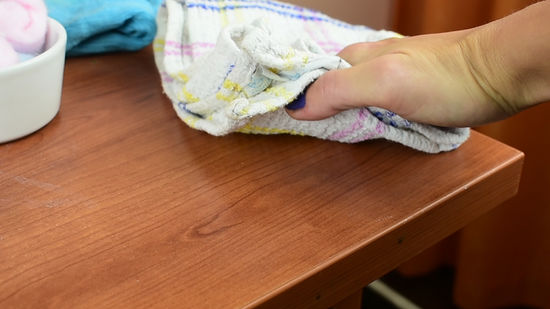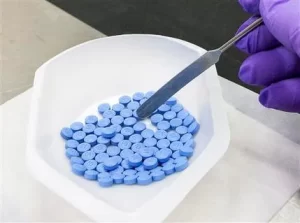
Removing Ink Stains from Wood
Ink stains on wood surfaces can be stubborn and unsightly, but with the right approach, you can effectively remove them without causing damage to the wood. Follow these steps to tackle ink stains on wood surfaces:
These requiring careful attention and the right techniques to avoid damaging the wood’s finish. Whether it’s a pen mark on a wooden table or an accidental ink spill on hardwood floors, addressing the stain promptly and with the appropriate methods can help effectively remove the ink without causing harm to the wood. In this comprehensive guide, we’ll explore various methods for removing ink stains from wood and provide step-by-step instructions to help you tackle the task effectively.
Understanding Ink Stains on Wood
Ink stains can be particularly stubborn on wood surfaces due to the porous nature of the material. If not addressed promptly, the ink may penetrate the wood, making it more challenging to remove. However, with the right approach and a bit of patience, you can effectively lift the ink stain and restore the wood’s appearance.
Step-by-Step Guide to Removing Ink Stains from Wood
1. Act Quickly
As soon as you notice an ink stain on wood, it’s essential to act quickly to prevent it from setting into the surface. The longer the ink sits, the harder it may be to remove. Begin by blotting up as much of the ink as possible using a clean cloth or paper towel. Press gently to absorb the ink without spreading it further.
2. Test a Mild Cleaner
Before applying any cleaning solution to the stained area, it’s crucial to test it on a small, inconspicuous part of the wood to ensure it doesn’t cause any damage. Choose a mild cleaner such as dish soap diluted in water or a mixture of vinegar and water. Apply a small amount of the solution to the test area and observe for any adverse reactions, such as discoloration or damage to the wood’s finish.
3. Apply the Cleaner
If the cleaner passes the test, dampen a clean cloth with the solution and gently dab it onto the ink stain. Avoid rubbing the stain vigorously, as this can cause the ink to spread further. Instead, use a dabbing motion to lift the ink from the wood surface. Continue applying the cleaner until you see the ink stain begin to fade.
4. Try Rubbing Alcohol
If the ink stain persists, rubbing alcohol can be an effective solution for removing ink from wood. Dampen a cotton ball or pad with rubbing alcohol and gently dab it onto the stained area. Rubbing alcohol acts as a solvent, helping to break down the ink and lift it from the wood surface. Again, avoid rubbing too vigorously to prevent damage to the wood.
5. Consider Hydrogen Peroxide
For stubborn ink stains that are difficult to remove with rubbing alcohol, hydrogen peroxide can be an effective alternative. Apply a small amount of hydrogen peroxide to a cotton ball or pad and dab it onto the stained area. Allow the hydrogen peroxide to sit for a few minutes to penetrate the ink stain before wiping it away with a clean, damp cloth.
6. Fine Steel Wool (Optional)
In some cases, particularly for deep or stubborn ink stains, you may need to use fine steel wool to gently buff away the stain. However, this method should be used with caution, as excessive rubbing can damage the wood’s finish. Use the steel wool sparingly and apply gentle pressure to avoid scratching the wood surface.
7. Rinse and Dry
After treating the ink stain, rinse the area with clean water to remove any residue from the cleaning solution or solvent. Use a clean, damp cloth to wipe away any remaining traces of ink or cleaner. Once the area is clean, dry it thoroughly with a clean towel or cloth. Ensure that no moisture remains on the wood surface to prevent warping or damage.
8. Apply Wood Polish or Wax
Once the ink stain is successfully removed, consider applying a wood polish or wax to the treated area to restore shine and protect the wood. Choose a polish or wax specifically designed for wood surfaces and follow the manufacturer’s instructions for application. Apply the polish or wax evenly to the wood surface using a clean cloth, then buff it to a shine with a separate cloth.
Precautions and Tips
- Always test any cleaning solution or solvent on a small, inconspicuous part of the wood before applying it to the stained area.
- Avoid using harsh chemicals or abrasive cleaners, as they can damage the wood’s finish.
- Use gentle, dabbing motions when applying cleaning solutions to prevent spreading the ink stain further.
- If the ink stain is particularly stubborn or extensive, consider seeking professional assistance to avoid causing damage to the wood.
Conclusion
Removing ink stains from wood requires patience, careful attention, and the right techniques to achieve the best results. By following the step-by-step guide outlined above and using the appropriate cleaning solutions and methods, you can effectively lift ink stains from wood surfaces without causing harm to the material. Remember to act quickly, test any cleaners or solvents beforehand, and proceed with caution to protect the wood’s finish and restore its appearance. With proper care and maintenance, you can keep your wood surfaces looking clean, pristine, and ink-free for years to come.




